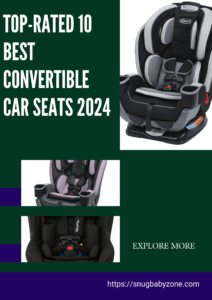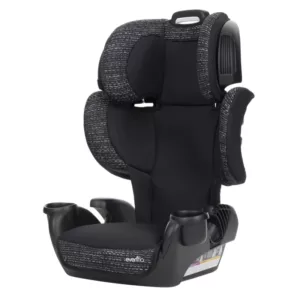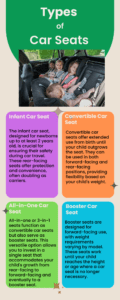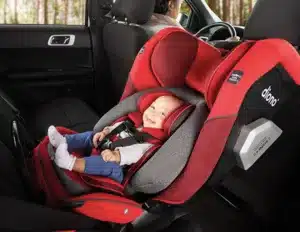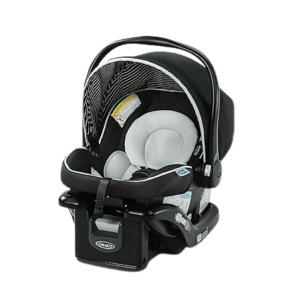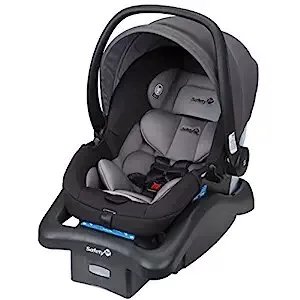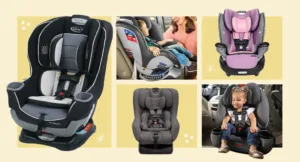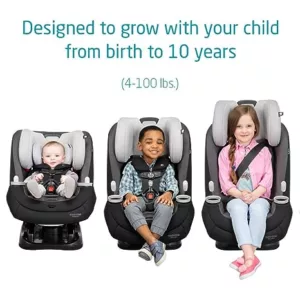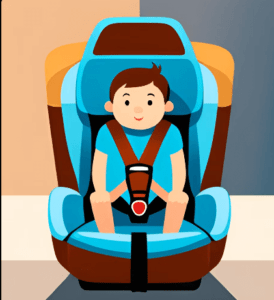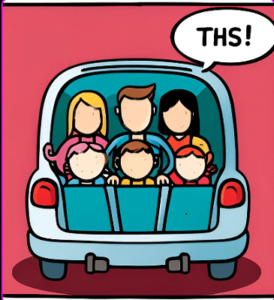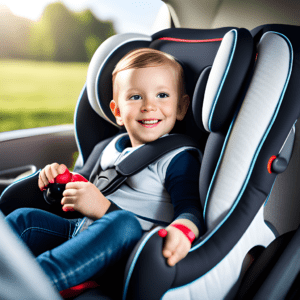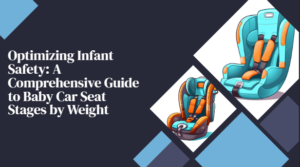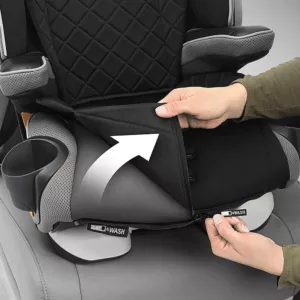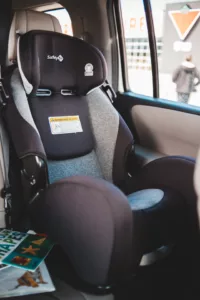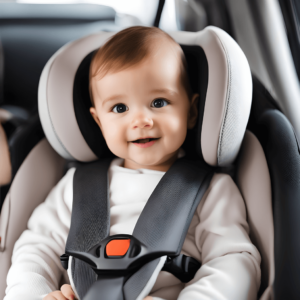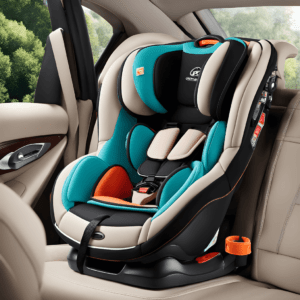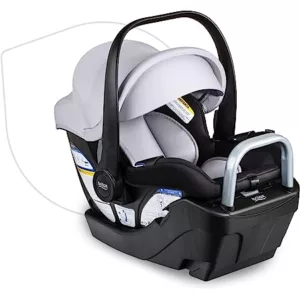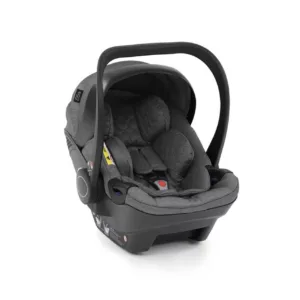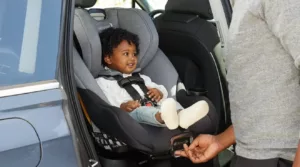How long does a baby use an infant car seat? Join us as we unravel the stages of this vital safety device and discover when it’s time for our tiny passengers to transition to new horizons.
Thank you for reading this post, don't forget to subscribe!Ensuring the safety and well-being of our precious little ones is a top priority in the intricate tapestry of parenthood. From the moment they enter our lives, we embark on a quest to shield them from harm, especially during transportation. The humble infant car seat becomes our trusty companion in this journey, providing a cocoon of security and protecting our babies during countless rides.
6 Factors to Consider When Determining the Time Duration for Using an Infant Car Seat
Table of Contents
ToggleThe safety of our little ones is paramount, especially when traveling in vehicles. Transitioning to a different car seat becomes necessary as our children grow and reach various developmental milestones. Several factors come into play when determining the optimal duration for using an infant car seat. These factors consider the physical and developmental progress of the child, as well as the guidelines provided by car seat manufacturers and legal requirements. Let’s delve deeper into each of these factors to understand their significance in ensuring the safety and comfort of our little passengers.

Age and Developmental Stage – How Long Does a Baby Use an Infant Car Seat?
As infants grow, their developmental milestones play a significant role in determining when it is appropriate to transition to a different car seat. While age alone is not the sole factor, it provides a general guideline for assessing readiness. For example, as babies gain head and neck control, they may be better suited for a car seat that allows for more freedom of movement.
Most infant car seats have a recommended age limit of around 1 year. However, it’s essential to consult the manufacturer’s specific guidelines for the infant car seat being used.

Weight and Height Limit – How Long Should Babies Ride in an Infant Car Seat?
Car seat manufacturers establish weight and height limits for their products to ensure optimal infant protection. These limits, usually indicated in a range, should be strictly followed. When a child exceeds the specified limits, it’s time to consider transitioning to a car seat designed for higher weight and height capacities. The height limit for most infant car seats is typically around 30 to 32 inches.
Development of Head and Neck Control – What’s the Duration for Using an Infant Car Seat for Babies?
The ability of a baby to support their head and neck independently is an important developmental milestone. It is crucial for proper alignment and protection during travel. If a child has achieved adequate head and neck control, they may require a car seat that offers more space and freedom of movement. It is recommended that when buckled in, the distance between the top of their head and the top of the seat should be less than one inch.
Car Seat Manufacturer’s Guidelines – The Recommended Timeframe for Using an Infant Car Seat for Babies
Each car seat manufacturer provides specific guidelines and recommendations for the usage duration of their products. These guidelines consider factors such as the car seat’s design, structure, and safety features. Familiarizing oneself with these guidelines and following them accordingly is vital to ensure optimal safety for the child.
Legal Requirements and Regulations – How Long Is the Usual Period Babies Need an Infant Car Seat?
Every region or country has specific legal requirements and regulations regarding child passenger safety. These laws outline the minimum standards that must be met for car seat usage. It is crucial to be aware of and comply with these requirements to ensure legal compliance and maximize your child’s safety.
Comfort and Fit within the Car Seat – How Long Is It Recommended for Babies to use Infant Car Seat?
While safety is paramount, ensuring the comfort and proper fit of the child within the car seat is also important. A well-fitted car seat provides a secure and comfortable environment for the baby during travel. Checking for proper harness adjustment, cushioning, and overall fit will contribute to a positive and enjoyable experience for the child.

By carefully considering these factors, parents can make well-informed decisions regarding the appropriate duration for their infant to use an infant car seat, ensuring their precious little passengers’ highest safety and comfort.
Exploring Options Beyond the Infant Seat – When to Switch from Infant Car Seat
Infant car seats are designed to accommodate newborns and infants up to a specific weight and height. However, as your baby grows, they may surpass these limits, rendering the infant seat inadequate. It’s crucial to transition to a car seat appropriate for their current size and development. There are different types of car seats available as alternatives to infant car seats:
Convertible Car Seats: Convertible car seats are a popular choice for transitioning from an infant car seat. These versatile seats can be used both in rear-facing and forward-facing positions, allowing for extended usage and adapting to your child’s growth. They typically have higher weight and height limits, allowing for extended rear-facing use, which is considered the safest position for young children.
All-in-One Car Seats: All-in-one car seats provide maximum convenience and longevity. They offer rear-facing, forward-facing, and booster seat capabilities, covering all stages of your child’s car seat needs. These seats can be utilized from infancy until your child no longer needs a booster seat. They come with adjustable features, ensuring a customized fit throughout your child’s developmental stages.
Combination Car Seats: Once your child outgrows their convertible car seat, a combination car seat can be a suitable option. These seats typically transition from a forward-facing harness seat to a booster seat, catering to older children. Combination seats are easy to use and provide continued safety as your child grows.
Booster Seats: As your child ages and becomes more independent, a booster seat becomes necessary. Booster seats elevate your child, ensuring that the seat belt fits correctly and provides optimal protection. You can choose between high-back and backless booster seats, depending on your child’s height and personal preference.
Here’s in a table highlighting the weight and height limits for each type of car seat:
| Car Seat Type | Weight Limit | Height Limit |
| Convertible Car Seats | 5-40 lbs | 19-40 inches |
| All-in-One Car Seats | 5-120 lbs | 19-55 Inches |
| Combination Seats | 20-100 lbs | Varies |
| Booster Seats | 40-120 lbs | Varies |
Remember to consult the specific guidelines and instructions provided by the car seat manufacturer for each individual model, as requirements may vary.
What are the Recommendations of the American Academy of Pediatrics (AAP) for Baby Car Seats?
Here’s a table summarizing the AAP guidelines for child passenger safety, including information on infant car seats and transitioning to different types of car seats as children grow:
| Stage | Car Seat Type | Recommendations |
| Infants and Toddlers | Rear-Facing Car Seat | Ride in a rear-facing car seat as long as possible, until reaching the maximum weight or height limit specified by the car seat manufacturer. Provides optimal protection for the head, neck, and spine |
| Toddlers and Preschoolers | Forward-Facing Car Seat with Harness | Transition to a forward-facing car seat with a harness after outgrowing the rear-facing seat. Use until the child reaches the maximum weight or height limit specified by the manufacturer. |
| School-Age Children | Booster Seat | Transition to a booster seat once outgrowing the forward-facing car seat. Use until the child reaches a height of 4 feet 9 inches and is between 8 and 12 years old. |
| Older Children | Seat Belt | Transition to using the vehicle’s seat belt alone once reaching 4 feet 9 inches and 8-12 years of age. The seat belt should fit properly, with a lap belt across upper thighs and a shoulder belt across the chest and shoulder. |
Remember to consult the specific guidelines and instructions provided by the car seat manufacturer for each individual model, as requirements may vary.
Recommendations for Reducing the Risk of Injuries and Fatalities by NHTSA
The recommendations by the National Highway Traffic Safety Administration (NHTSA) for preventing injuries and fatalities and protecting children in motor vehicles are as follows:
| Recommendations | Description |
| Proper Car Seat Use | Select and use the appropriate car seat or booster seat for a child’s age, height, and weight. Follow the car seat manufacturer’s instructions for installation and usage. |
| Airbag Safety | Children should always ride in the back seat, away from active airbags, until they reach the age or size limit recommended by the car seat manufacturer. |
| Vehicle Compatibility and Installation | Ensure the car seat is compatible with the vehicle and installed correctly according to the car seat manufacturer’s instructions and the vehicle’s owner’s manual. |
| Regular Safety Checks | Regularly check the car seat for proper installation, harness adjustment, and overall condition. If the car seat has been involved in a moderate or severe crash, it is recommended to replace the car seat. |
| Education and Awareness | Stay informed about child passenger safety through education and awareness programs. Stay updated on current safety recommendations and guidelines. |
Following these recommendations helps reduce the risk of injuries and fatalities for child passengers in motor vehicles. It is essential for parents, caregivers, and other adults responsible for children’s safety to be aware of and adhere to these guidelines to ensure optimal protection during travel.
Conclusion – How Long Does a Baby Use an Infant Car Seat?
Selecting a new car seat for your baby involves prioritizing safety features such as a five-point harness system, side-impact protection, ease of installation, comfort, padding, and adjustable features. As your baby outgrows their infant car seat, transitioning to another car seat that aligns with their current needs is crucial. By prioritizing safety, following manufacturer guidelines, and adhering to legal requirements, you can ensure your child’s well-being on the road. Making informed decisions and selecting the appropriate car seat provides your baby with the utmost safety and allows for enjoyable and worry-free journeys together.
Frequently Asked Questions – FAQ – How Long Does a Baby Use an Infant Car Seat?
1. What is the difference between an infant seat and a car seat?
The terms “infant seat” and “car seat” are often used interchangeably, but they refer to different types of child safety seats used for varying stages of a child’s growth and development.
2. When should you put the infant car seat in the car?
It is generally recommended to install the infant car seat in your car before the baby is born or well before transporting it. It allows you to install and familiarize yourself with the car seat properly, ensuring it is correctly secured and ready for use when the baby arrives.
3. What comes after the infant car seat?
After the infant car seat, the next stage in child safety seats is typically a convertible car seat. A convertible car seat is specifically engineered to cater to the needs of a developing child, providing adaptability for use in both rear-facing and forward-facing orientations.
4. Should the car seat be placed behind the driver or the passenger?
The car seat can be placed behind the driver or the passenger, depending on personal preference and factors such as safety considerations, airbag deactivation, accessibility, and comfort.

